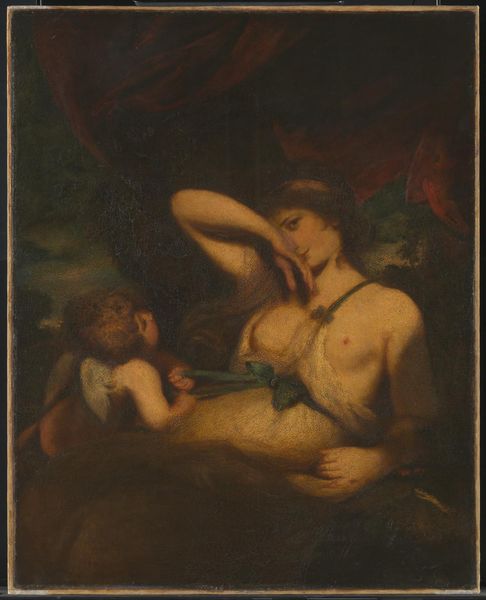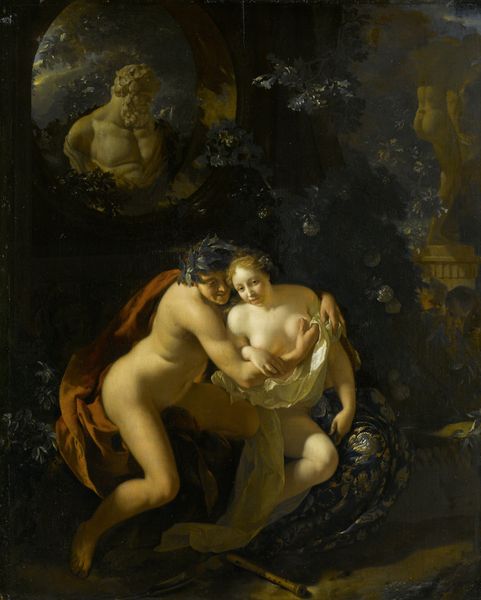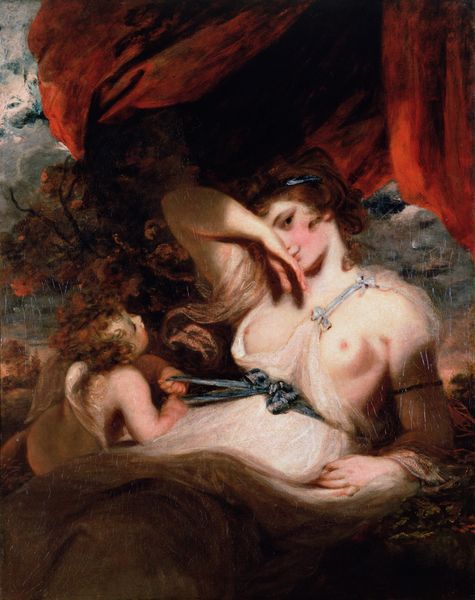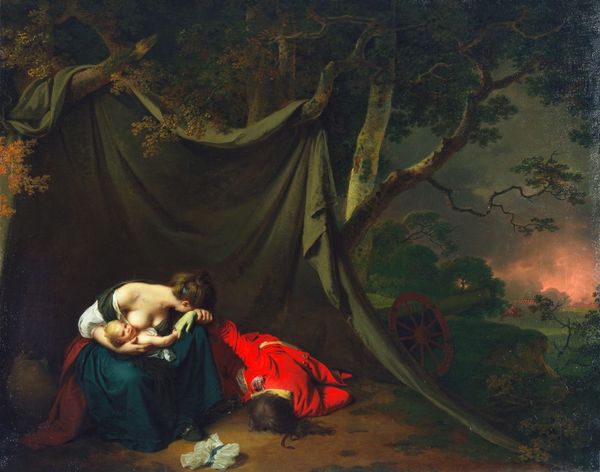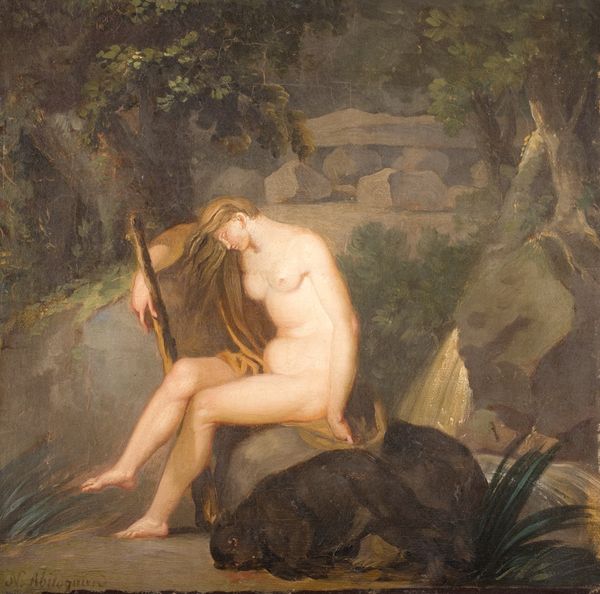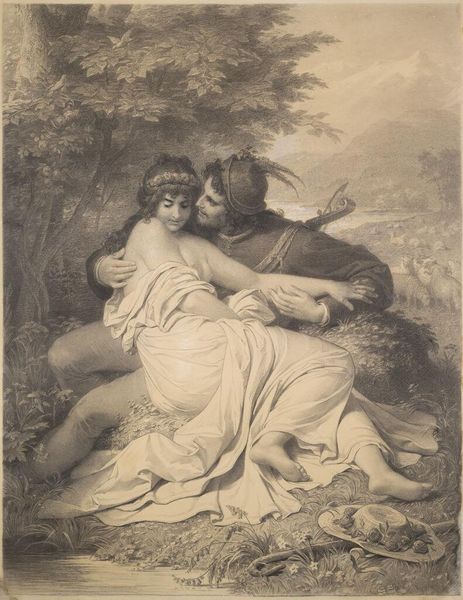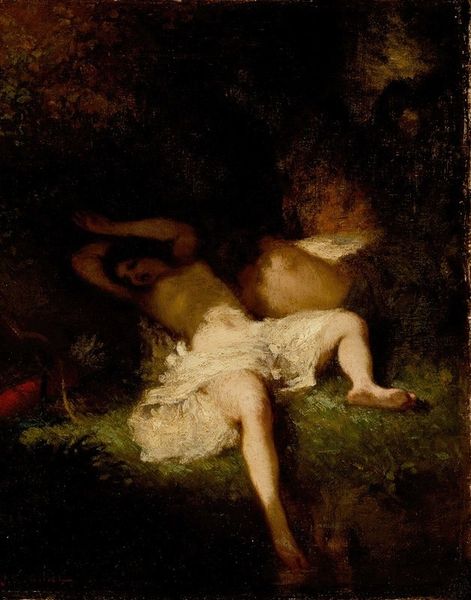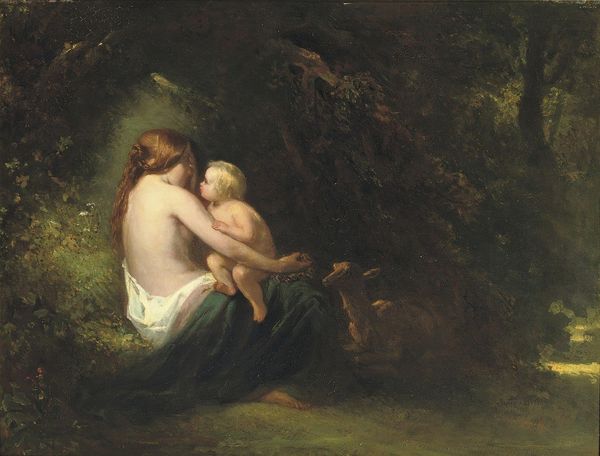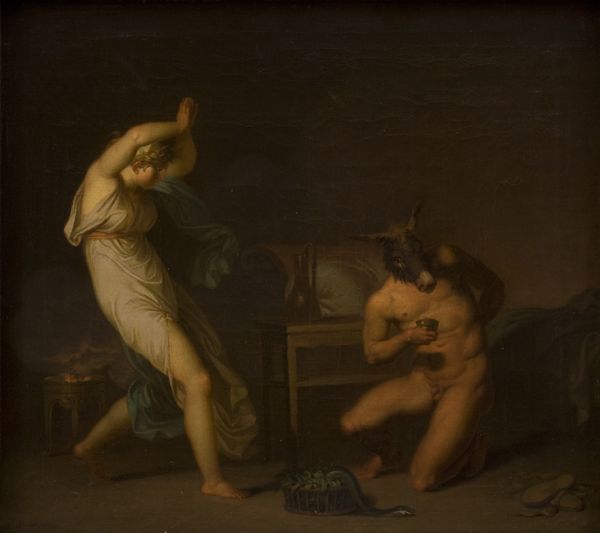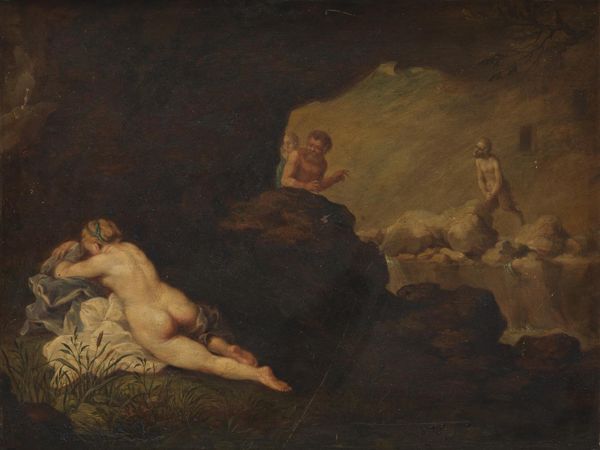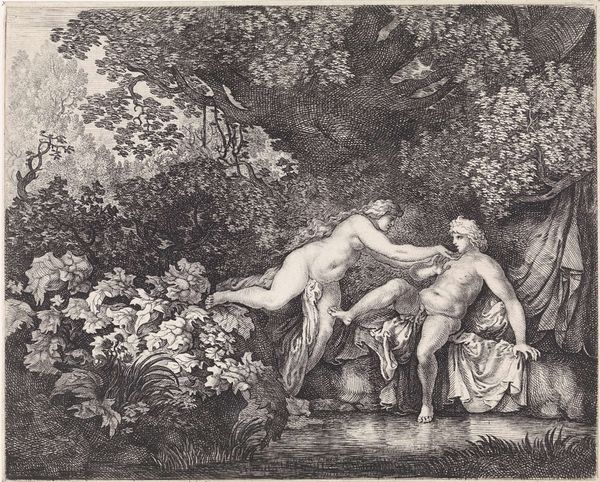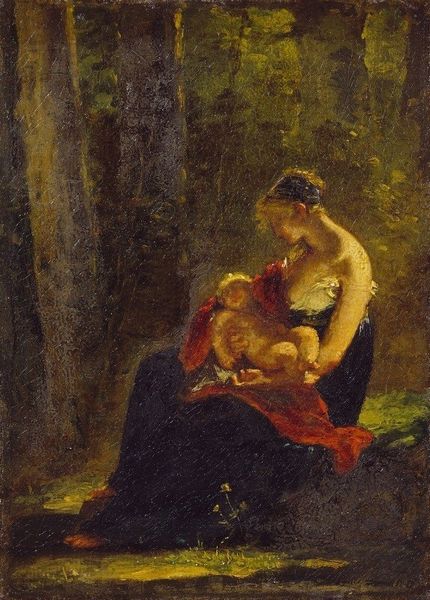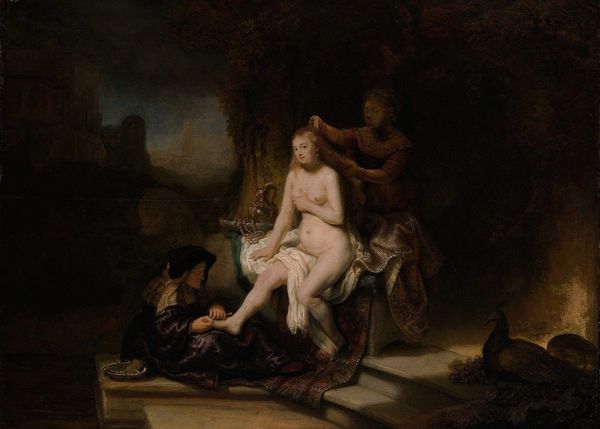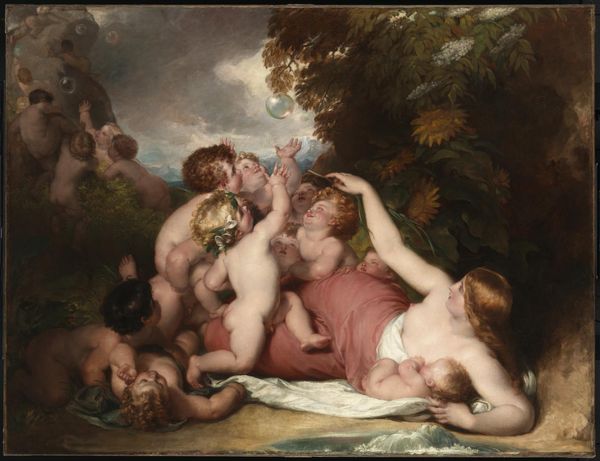
painting, oil-paint, canvas
#
painting
#
oil-paint
#
figuration
#
canvas
#
romanticism
#
history-painting
#
academic-art
#
nude
Dimensions: 47.5 cm (height) x 38 cm (width) (Netto), 56.3 cm (height) x 46.6 cm (width) x 4.6 cm (depth) (Brutto)
Editor: Here we have Nicolai Abildgaard’s oil on canvas, "The Greek Poet Sappho and the Girl from Mytilene," from 1809. It's striking how the subdued color palette lends a kind of hushed, almost reverent tone to the scene. How do you interpret this work, considering the period in which it was created? Curator: Well, let's consider the Romantic era. Artists were very interested in themes of emotion, individualism, and often a yearning for past golden ages. Sappho, as a female poet from antiquity writing about love and desire, presented a compelling subject, ripe for exploration through a Romantic lens. Abildgaard is painting this in Denmark, in a moment where Neoclassicism is still influential, but ideas of individual expression are emerging in the public sphere. What do you make of the almost staged nature of the figures' arrangement? Editor: It almost feels like a tableau vivant, but with a surprising intimacy given the grand historical themes typical of Academic art. The positioning feels deliberate, not candid. Curator: Precisely! This "staged" feel brings into play questions of representation, right? Think about the power structures at play in museums, how images of women, particularly nude women, were historically displayed and consumed, often by a male gaze. Abildgaard presents this Sappho figure as an object of aesthetic and perhaps intellectual admiration. He carefully manages how the viewer relates to the relationship depicted. Editor: So, you’re saying the painting isn't simply a celebration of female love and intellectualism, but also reveals how such themes are carefully constructed within specific socio-political frameworks? Curator: Exactly. Consider, for example, who has the power to display and interpret these images, both then and now. Does the museum itself affect how we perceive the figures in it? Editor: I never considered how the painting is, in a way, performing its own kind of societal role. This makes me question my initial read. Thank you. Curator: And I am more convinced of the painting's complexity through your response. A fruitful discussion, indeed.
Comments
No comments
Be the first to comment and join the conversation on the ultimate creative platform.
